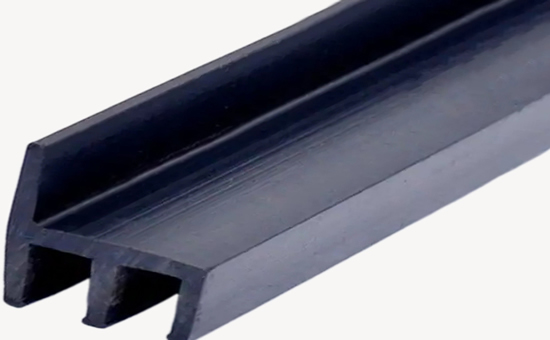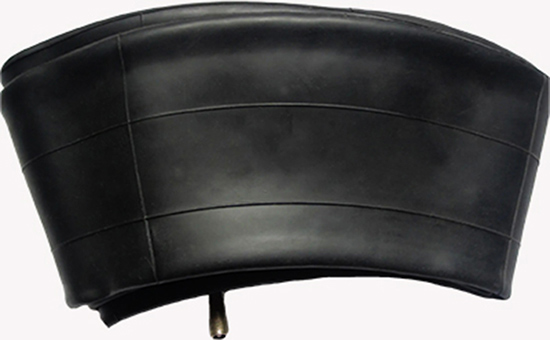Mixing is an important process in the production process of reclaimed rubber products, and the quality of the rubber after mixing has a decisive impact on the subsequent processing and the quality of the products. Reclaimed rubber mixing is not good, prone to the problem of uneven dispersion of compounding agent, rubber may appear reduced mechanical properties, unstable physical properties, poor aging performance, poor fluidity of rubber compound, product appearance defects and other problems, reclaimed rubber products manufacturers can start from the following points to promote the uniform dispersion of recycled rubber compound.
1. Selection and treatment of raw materials for recycled rubber products
When using reclaimed rubber to produce rubber products, it is first necessary to select suitable reclaimed rubber with suitable indicators such as tensile strength, tear elongation, hardness, and Mooney viscosity according to the performance requirements of the product, and the quality of reclaimed rubber is required to be stable; Select appropriate vulcanizing agents, accelerators, reinforcing agents, fillers, softeners, etc., to ensure that the compounding agent has good compatibility with reclaimed rubber, the compounding agent has high purity, less impurities, and uniform particle size distribution.

Pretreatment of part of the reclaimed rubber compounding agent, including crushing and sieving the block compounding agent to make its particle size smaller and uniform; For example, carbon black and silica need to be dried and ground before being added to the mixer to avoid affecting the dispersion uniformity of the rubber compound.
2. Choose the right mixing equipment
When using reclaimed rubber as the main raw material to produce rubber products, it is first necessary to select a suitable rubber mixer according to the characteristics and production scale of reclaimed rubber compounds E4LYY926. The internal mixer is suitable for large-scale production, and has the advantages of high mixing efficiency, good uniformity and high degree of automation. When the reclaimed rubber and the original rubber are used together, the internal mixer can use the spatial regularity of the relative motion of the impeller designed inside to form a shear force, which makes the reclaimed rubber more evenly mixed into the new rubber material during the mixing process to ensure the uniformity of mixing.

3. Reasonable control of recycled rubber mixing process parameters
The mixing temperature of the reclaimed rubber is very important, and the mixing temperature of the internal mixer should be controlled at 120-150 °C, and the roll temperature of the open mixer should be controlled at 50-90 °C, which should be adjusted according to the characteristics of the reclaimed rubber. If the mixing temperature is too high, it will easily lead to the scorching of the reclaimed rubber compound, and the temperature will be too low to cause the compounding agent to be dispersed unevenly. The rotor speed of the internal mixer needs to be determined according to the viscosity of the reclaimed rubber compound and the characteristics of the compounding agent, and the general speed is among 30-100 rpm; The roller pitch of the open mill is adjusted according to the hardness and throughput of the reclaimed rubber compound, and the initial roller pitch is generally among 0.5-1.5 mm.
4. Appropriately adjust the mixing and feeding sequence of reclaimed rubber

When the reclaimed rubber is mixed in the open mill, the principle of rubber is as follows: the compounding agent with a small amount and difficult to disperse is added first, and the compound with a large amount and easy to disperse is added later; Sulfur and overspeed accelerators are added last to prevent scorching; The usual feeding sequence is as follows: reclaimed rubber→ accelerator, active agent, antioxidant→ reinforcing agent, filler→ liquid softener→ sulfur, overspeed accelerator.
When reclaimed rubber is mixed in the internal mixer, the reasonable feeding sequence can reduce the mixing time and improve the mixing efficiency, and the general feeding sequence is: reclaimed rubber → active agent, solid softener, ordinary accelerator→ carbon black→ liquid softener→ sulfur, and overspeed accelerator Compounding requires the compounding agent in the rubber compound to achieve the minimum degree of dispersion to ensure the necessary physical and mechanical properties, and to make the feeding material have the minimum plasticity that can normally carry out various subsequent processing operations such as calendering and extrusion.

In the production of reclaimed rubber products, there are the following four basic technical requirements for the mixing process: the compounding agent is crushed evenly to ensure the consistent performance of the rubber compound; Make the compounding agent, especially carbon black and other reinforcing compounding agents, achieve the best dispersion; The rubber material has a certain plasticity to ensure that the follow-up process is easy to carry out smoothly; Minimize mixing time, minimize energy consumption, and prevent over-mixing. In the future, Xiaobian will continue to share with you the key points of the recycled rubber mixing process and solutions to common problems.
Exclusive original article [commercial authorization] reprint, excerpt and excerpt in any form are prohibited without written authorization. Focus on Hongyun rubber: learn the process formula and raw material technology of producing rubber products from recycled rubber to help you reduce costs and increase profits